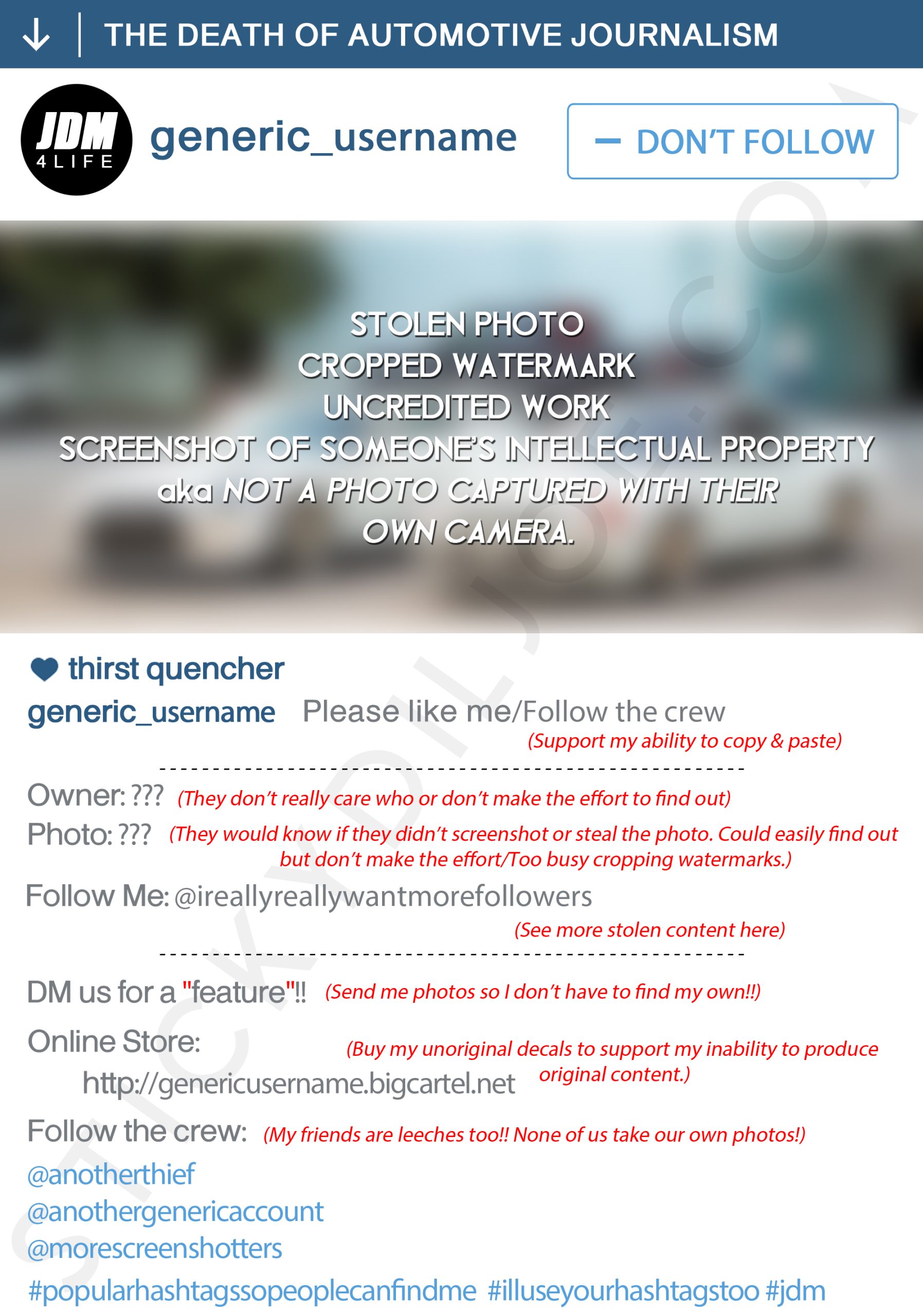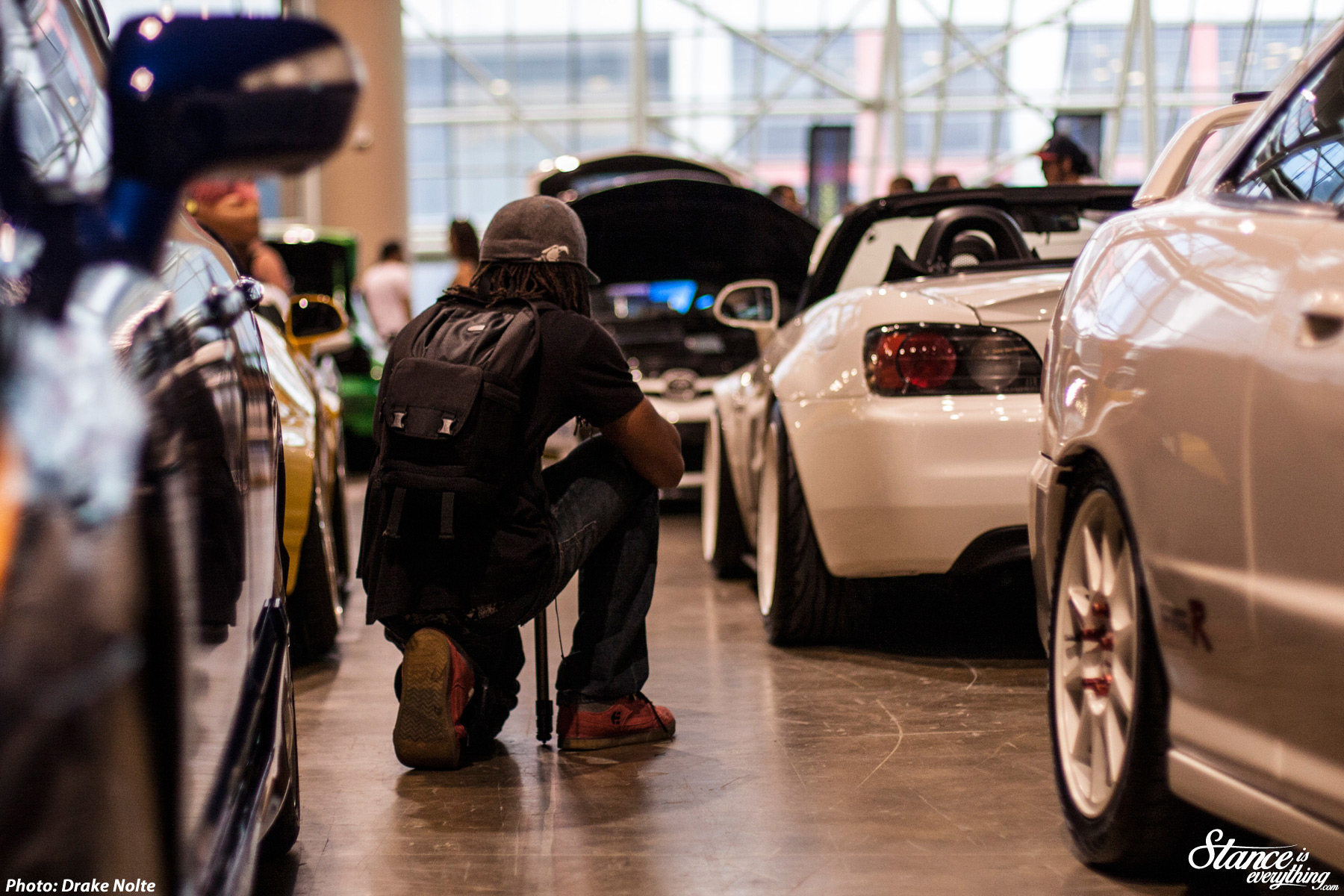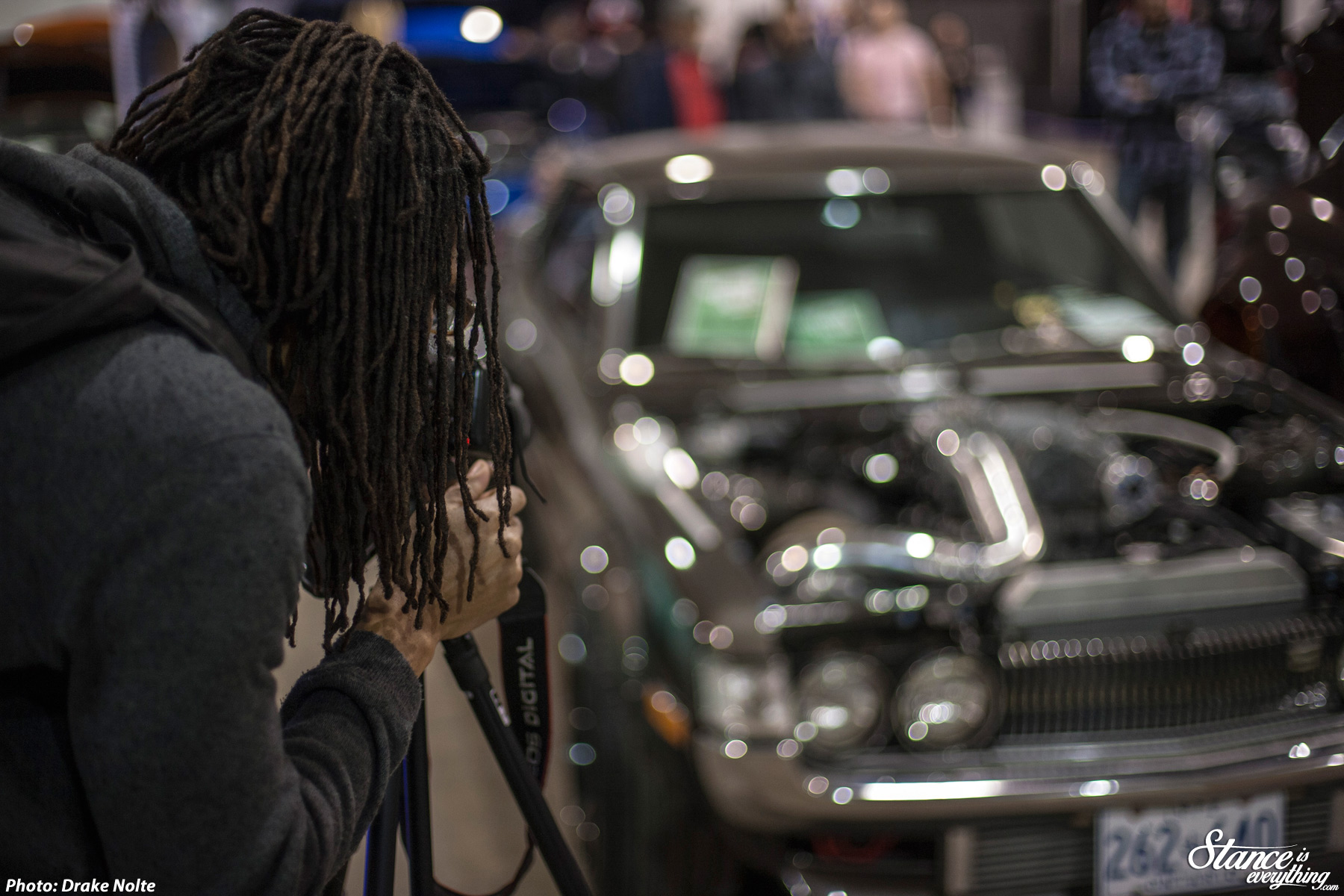People often criticize the blog boom of late 2008, through 2010, but in hindsight it is something the automotive media desperately needed. That boom flipped the print industry on its head as online producers began releasing free content of equal, or often better, quality than their print counterparts in less than half the time.
To keep their market share and endure the new survival of the fittest landscape magazines had to adapt, innovate, take risks, and go that extra mile to procure original engaging content. The days of relying on box stock event coverage, solitary cover features and thinly veiled advertorial reviews were no more.
Those same online content producers that left print editors with their heads in their hands served as inspiration for people like myself to try and carve our own way into the automotive media world. The tools and audience were available, we just had to roll up our sleeves and give it our best shot.
As the online space continued to evolved and easier, quicker, publishing platforms like tumblr, Facebook, and Instagram garnered a larger audience a second boom arrived that was arguably bigger than the first.
Prior to these ‘micro blogging’ platforms, creating an online space took effort, not a tremendous amount, but effort all the same. Those initial first steps helped separate those with drive from those without. When that barrier was reduced to a few phone taps the floodgates opened and the market became quickly over saturated. Unfortunately unlike the previous boom, this one had a negative effect on the quality of content produced.
Many of these new micro bloggers realized that while creating an online space was now easy, keeping it filled with original content was not. So to avoid large lapses of inactivity, often caused by their own lack of creativity, they re-posted the work of others. Noticing this content was doing better than their own they continued to ‘borrow’ from the more talented instead of honing their craft.
Almost inexplicably this became the go-to model for people to follow. In short Timmy Vape noticed Stevey Swag amassed 10,000 likes in a month without ever picking up a camera and followed suit, hoping to do the same.
Now don’t get me wrong, there’s nothing wrong with a well curated aggregate website/social media space made up of a combination of original and shared content –like say one that say compiles the best build threads the Internet has to offer, one that combs the internet for interesting projects up for sale, or one composed of unique vehicles from Japan and abroad— but sadly today these sites are becoming fewer and fewer. Instead of pages providing technical info, opinions, insights and related content when original content is unavailable we are left with regurgitation pages that can hardly be bothered to credit the photographer whose work they’ve taken advantage of.
These talentless hacks assume they can simply add “tag the owner and photographer” to their profile in order to clear themselves from any wrongdoing. Joey Lee from The Chronicles talked about this practice in 2014 and yet it still runs rampant.

Worse still some established online outlets saw this method as a cheaper way to engage their audiences (why hire a photographer when borrowed content does just as well) and began devolving into similar models. As around the web sections grew in popularity and some dotcoms were abandoned all together, ‘features’ went from multi-page print spreads, to 800 word blog posts, to fifteen word sentences and a slew of hashtags in a few short years.
Industry marketers also took note and leveraged these pages as cheap way to get their product seen by a large audience (even if they factored in a fake follower number of around 25%) and provided page owners with product to promote, use, and give away. Sometimes even cutting them a check for not so subtle advertisement posts.
New photographers hoping for a fast lane to exposure, contributed to these outlets directly only to quickly learn that there was very little, if any, return in doing so. In our lust for uninterrupted streams of content and instant gratification, we accepted these baseless pages and their underhanded tactics as the new normal, creating a race to the bottom in the process.
We have birthed a culture where the creators who are out there going to the events, putting in work, and generating content are second fiddle to those sharing it. By holding the content stealers in higher regard than the creators, and often criticizing the content creators publicly when they ask for credit, we are effectively pushing our most talented right out of the industry.
Some of you reading this might be wondering what the harm in following @your_favorite_auto_niche_here_daily is, and the sad reality is that every day we support these pages by liking their posts, tagging people in their comments, and giving them content we are putting another nail in the coffin of automotive media.
If photographers and videographers alike have a hard time asking people to properly attribute them for their work, can you imagine the uphill battle they will face if they ever want to get paid? Meanwhile ever notice what happens when you help those pages meet their milestones? They open up a store and invite you to buy poorly made, marked up, merchandise that often contains even more stolen intellectual property.
As a community we desperately need to support the talented driven by passion and not those out to make a quick dollar.
Now, as I bring this somewhat long-winded and far-reaching diatribe to a close, let me admit that I’m not perfect. In my seven year history I have, on occasion, re-posted content without accurate credit and sadly pandered to the same pages I’ve condemned. Instead of using this post as a way to throw those occasions right back in my face, take it as a commitment on my behalf to do better and catalyst for you do to do the same.
Only together can we fix this thing called automotive media before it’s far too late.

